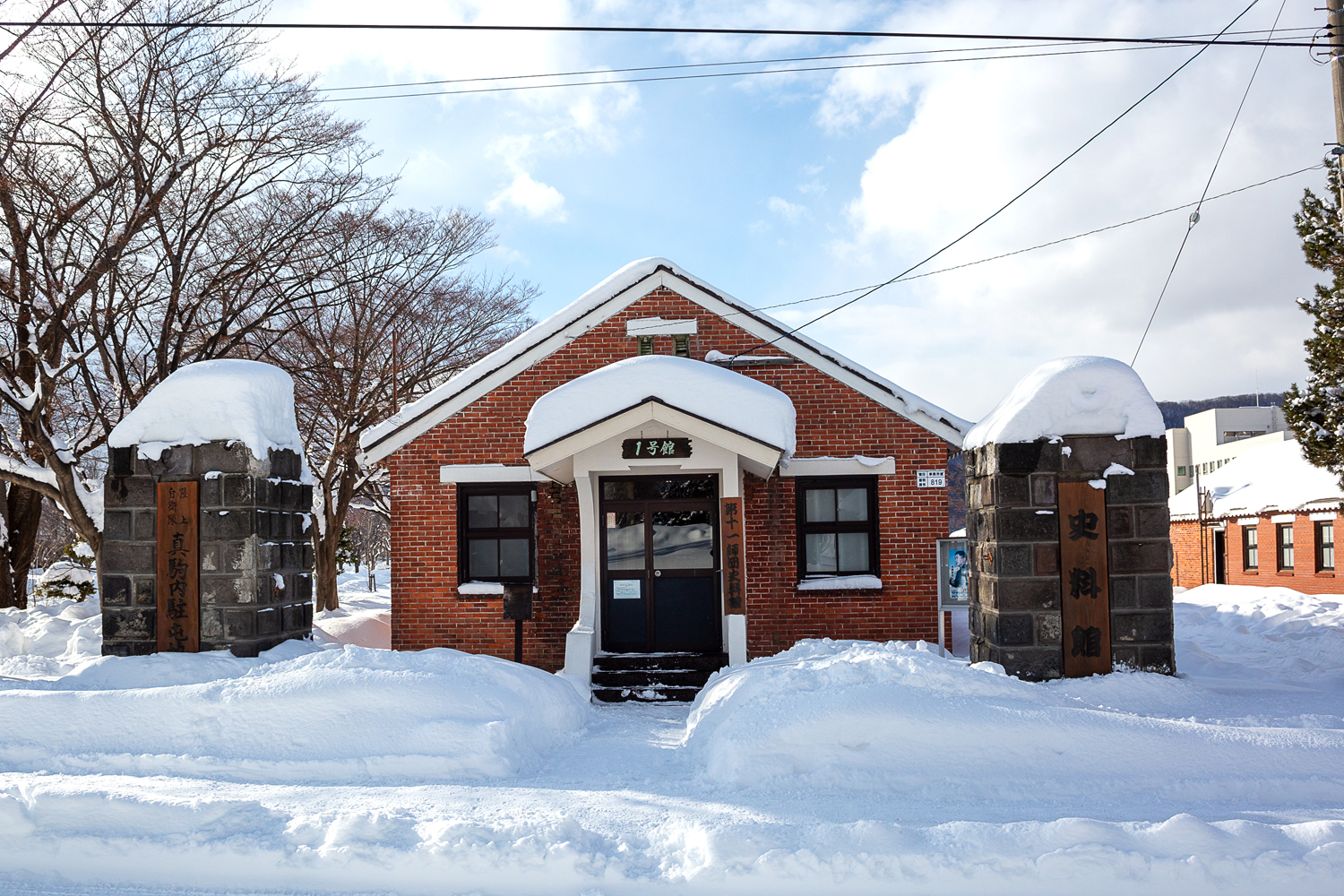
The retro Makomanai Garrison Museum

The retro Makomanai Garrison Museum
There are various public relations facilities at bases and garrisons of the Ground, Maritime, and Air Self-Defense Forces. The Makomanai Garrison Museum is one of more than 120 such facilities in Japan and nearly 20 in Hokkaido.
The archives, located in the central area of the vast grounds, consists of four buildings. The first building we were taken to was the Silo Building. Why would a silo, a facility for dairy farming, be in the Self-Defense Forces?
"The silo was built in 1937 during the Makomanai Breeding Yard era by Edwin Dun as a dairy cattle test barn," said Kato Kengo, 1st Captain, Public Relations Executive, Makomanai Garrison Command and Duties Office. "When the U.S. military moved into Makomanai in 1946, six silos were demolished, but the silo barns were used for purposes such as a Non-Commissioned Officers' Club and meeting places."
Edwin Dun was invited by the Hokkaido Development Commission to promote livestock and dairy farming in Hokkaido. In other words, the silo is a relic that indicates that this area was an advanced dairy farm.

The silo building features Sapporo Nanseki (Soft Stone) in the silo area and the mansard roof of the adjacent former cattle barn area. It is one of the largest existing silos in Hokkaido.
Materials related to the Sapporo Snow Festival are on display inside. Makomanai Garrison was the second venue for the Snow Festival for 40 years since the 16th festival in 1965.

Panels show behind-the-scenes footage of snow sculpture production, which continues to this day
There is also an exhibition room featuring exhibits from the Sapporo Winter Olympics, which were held in Makomanai as the main venue. The Makomanai Garrison was a base for support groups and items such as valuable back-up medals were kept there for their cooperation in the operation of the Olympics.

This is the Sapporo Winter Olympics exhibition room. Makomanai Garrison has a special section called the Cold Weather Combat Training Unit, which has produced more than 50 Olympic athletes.
Inside the silo, which was used by the U.S. military as a watchtower, there is a staircase, and at the top there is an observatory deck.

Observatory overlooking Makomanai Garrison
The next destination is a group of three brick one-story buildings, named Building No. 1, Building No. 2, and Building No. 3, each of which exhibits related materials on the themes of the Ground Self-Defense Force, Tondenhei farmer-soldiers, and the former military, respectively.

Buildings No. 1-3 are remnants of barracks built by the U.S. Army that moved into the area after World War II. The base was called Camp Crawford.
At the Tondenhei Farmer-Soldier's House Reconstruction Corner in the No. 2 building, the explanation that, "People woke up in the morning to the sound of a bugle," led to a lively conversation about how, "We are the same today in that we get up, have lunch, and go about our daily business at the signal of a bugle."

Tondenhei Farmer-Soldier's House Reconstruction Corner
Looking around the various historical documents of the former military in Building No. 3, one is reminded that the "present" is a continuation of the past.

Building No. 3 with various historical documents of the former military, including ammunition cars of the time
"The Tondenhei farmer-soldier archives in Building No. 2 are well worth seeing, thanks to the cooperation of the Hokkaido Museum," said Public Relations Master Sergeant Katayose Narisato.

Kato (right) and Katayose
In recent years, Meiji-era Murata rifles have been a popular item for women and young people. The weapon appears in the popular comic Golden Kamuy set in Hokkaido in the late Meiji period.

Building No. 2, where you can see actual Murata rifles

Building No. 3 also contains military uniforms, historical documents of an infantry regiment, and other items that are connected to the world of Golden Kamuy

Exhibition corner in Building No. 1, which presents information on disaster response and international contribution activities
The buildings from the Camp Crawford era are still standing on the property. A theater from that era can also be seen.

Theater which is now used as a warehouse
Makomanai Garrison Museum 
Makomanai 17, Minami-ku, Sapporo, Hokkaido
TEL: 011-581-3191 (ext. 3905, 3808)
Hours: 9:00-16:00, closed Saturdays, Sundays, and national holidays
Admission: Free of charge *You must apply for a tour in advance.
Website